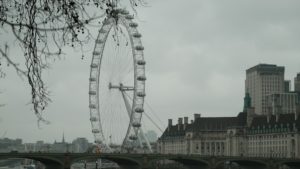In this blog, Geography teacher Tim, takes a look urban sprawl and explains what it is, why it's important to know and the key vocabulary you will need to know for your GCSE examinations.
‘Stop sprawling on your desk!’ would have been quite a common comment when I taught GCSE classes in the late afternoon after a long sporting session.
A student would of course be tired and decide to rest on the desk. Whatever the rights and wrongs, I hope you get the picture that this student has spread out all over the desk into areas that typically would be used for books, papers and pens!
What is Urban Sprawl?
The idea of a sprawl, something stretching and spreading across a surface area is something we see in Geography (and the world around us!) quite often. Specifically, urban sprawl is the outward growth of housing from the Central Business District (CBD), mainly due to the introduction of public transport and the increase in popularity of the private car.
The History of Urban Sprawl
It has led to the growth of numerous private, car-dependent suburbs. Suburbia was the name given to these areas that developed in the inter-war period (1920’s and 1930’s). It stuck and now corresponds to the ring of medium cost housing in the Burgess model of urban land-use.
So what do these houses look like? You may well be living in one. Many interwar houses are semi-detached, with bay windows, front and back gardens, and garages. In estate agent language – very desirable residences!
As each new housing estate was built its distance from the CBD increased and so its distance from the shops increased. As a result of this parades of shops grew up so people didn’t have to travel so far. Each parade is likely to have a small chain store (providing mainly low-order convenience goods) post-office, newsagent , several specialist shops (although these are now struggling due to competition), maybe a fast food outlet, and a non-essential service or two like a hairdresser. The parade usually has limited car parking space.
These post-war housing estates gave individual houses gardens, and often the estate had their own small park or play area. The developers – private or council – could afford to do this because land prices decreased substantially away from the CBD. So as the demand for housing increased the housing estates sprawled over the countryside. This led to the gradual introduction of town planning, with policies such as the greenbelt (a zone of land in which very little house building is allowed) being implemented.
These inter-war housing estates rarely had any industry nearby, and so residents, particularly in London had to travel long distances to a place of work – a process known as commuting.
Urban Sprawl and Countryside Conflict
In more recent times housing estates once more have begun to sprawl over the countryside. There is pressure to build on the green belt and to build on greenfield sites on the rural-urban fringe.
This has led to conflicts. Conflicts between developers and environmentalists, developers and existing house owners, developers and providers of recreation.
In short there is an increase in conflict between those who wish to see the economic development and extension of the urban area and those who wish to protect the rural environment that surrounds it.
A good example of this is in Shrewsbury where environmentalists wish to stop the building of a ring road as it will destroy unique habitats, cause the cutting down of many ancient trees and encourage more urban sprawl up to this new road.
Key Vocabulary to Know
To score highly in GCSE questions on urban sprawl, it would really help to understand (and use) such terms as greenfield site, rural-urban fringe, greenbelt, CBD, Burgess model of urban land-use, commuter, suburbia.
Its also important to understand the possible conflicts urban sprawl may lead to. Where you can, try to use a case study. Have a think about your local area or areas you considered in class. Finally, think about your attitudes to urban sprawl. What are the positives and what are the negatives.
Good luck with your studies!



Start the discussion!